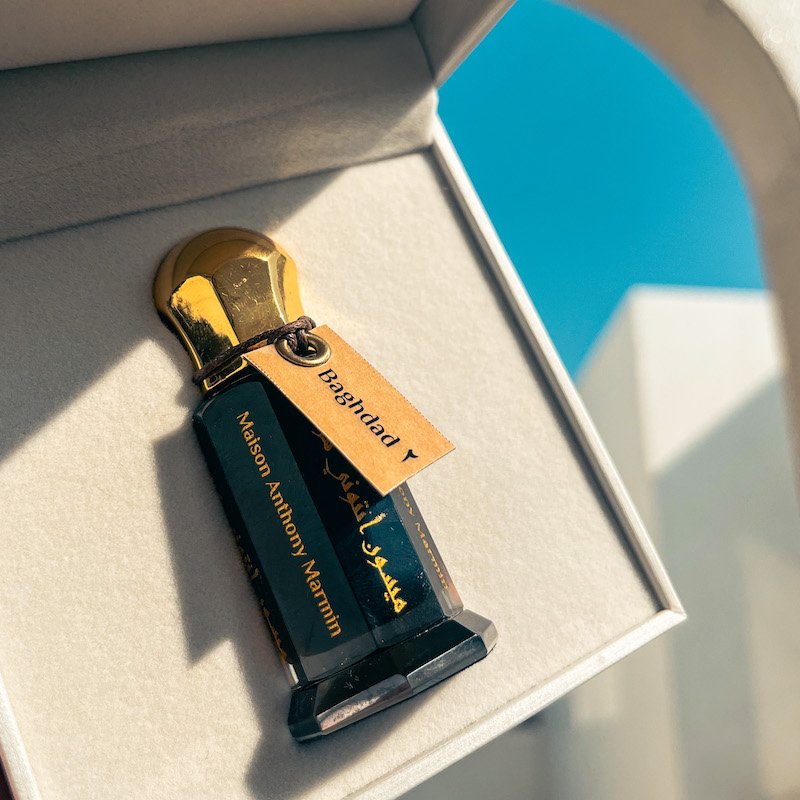What is Saffron
Saffron, the exquisite spice derived from the Crocus Sativus flower, has been renowned for centuries for its vibrant color, unique flavor and numerous health benefits. Beyond its culinary and medicinal applications, saffron has found a special place in the world of perfumery.
Harvesting the Red Gold
Saffron is meticulously harvested from the delicate threads of the Crocus sativus flower. This process is labor-intensive since each flower produces only a tiny amount of saffron, requiring thousands of flowers to yield a significant quantity. The vibrant red hues of saffron stem from natural pigments like crocin and crocetin present in the stigmas.
Cultivation Regions
Saffron cultivation predominantly occurs in regions like Iran, India, Spain, Greece, and Afghanistan. The unique climate and soil conditions in these areas contribute to the high-quality production of this coveted spice.
Aromatic Profile
Saffron possesses a distinctive aroma being earthy, floral, and slightly sweet notes. This complex fragrance profile makes it a valuable ingredient in the creation of perfumes, contributing a unique olfactory experience to the final product.
The Art of Saffron Extraction: Essential Oil Production
The process of extracting saffron essential oil is a meticulous art that requires precision. Steam distillation is the most common method employed to capture the essence of saffron. The delicate stigmas are carefully harvested and then subjected to steam, allowing the aromatic compounds to evaporate. The resulting steam is then condensed back into liquid form, producing saffron essential oil.
Saffron essential oil, with its concentrated fragrance, serves as a prized ingredient in perfumery. Perfumers value its purity and intensity, using it as a key component in the creation of signature scents.
The Cultural Significance of Saffron
Ancient Roots
Saffron's history dates back thousands of years, with its origins traced to regions such as Persia, ancient Greece and even ancient Egypt. In these cultures, saffron was valued for its culinary and medicinal properties.
Symbolism and Prestige
Throughout history, saffron has been a symbol of wealth, luxury, and prestige. Its use was often reserved for the elite, and it became associated with royalty and nobility.
Saffron in Traditional Medicine
Beyond its distinguished scent, saffron is well known for its health properties in traditional medicine systems such as Traditional Chinese Medicine. Recognized for its potential health benefits, saffron's inclusion in perfumery may be influenced by its reputation for promoting well-being and vitality according to traditional healing practices.
Saffron's Role in Perfumery
Base, Middle, and Top Notes
Saffron, with its rich aroma, is versatile enough to be used in various notes, adding depth and complexity to a perfume.
Top Notes: Saffron's initial impact is often felt in the top notes, offering an immediate burst of its spicy fragrance. This can create a great first impression for the wearer.
Middle Notes: Saffron seamlessly transitions into the middle notes, where its floral and earthy undertones continue to unfold, contributing to the perfume's overall character.
Base Notes: Saffron's essence plays a crucial role in the base notes, ensuring a long-lasting fragrance.
Saffron Blends: Artistry in Perfume Crafting
Perfumers often combine saffron with other ingredients to create unique and captivating blends. Saffron pairs exceptionally well with notes like rose, oud, sandalwood and amber among others. These result in fragrances that are sophisticated and Luxurious.
At Maison Anthony Marmin, we have housed this beautiful ingredient in plenty of our fragrances like our Baghdad ٢ or Bilqis among others, which take saffron to a level or excellence. You can use the search bar with the word saffron to compare all perfumes with this elegant note.



